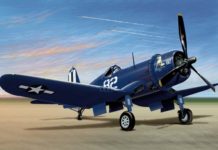On August 17, 1943, grinning American troops from the 3rd Infantry Division greeted British commandoes as they entered the city of Messina, on the Italian island of Sicily. For more than a month, U.S. troops under the command of Lt. Gen. George S. Patton Jr. raced British troops under Gen. Bernard Law Montgomery, each general eager to claim credit for capturing the strategic Mediterranean port city. Now the American had won.
But it was a bitter victory. During the 38-day campaign, a clash of egos between Patton and Montgomery escalated into a bitter feud that produced poor strategy and tactics. While the generals fought each other for glory, the bulk of the German army and their Italian allies escaped across the Strait of Messina to the mainland with most of their equipment.
Tension between the two commanders began to simmer during the Casablanca conference in January 1943 when President Franklin D. Roosevelt and Prime Minister Winston Churchill met to decide where to strike next after the successful campaign then being waged in North Africa.
British strategists convinced Roosevelt and Churchill the next Allied move should be an invasion of Sicily. Code-named Operation Husky, the invasion plan originally called for Patton’s Seventh Army to land on the northwestern coast of Sicily, near Palermo. Montgomery’s Eighth Army would land near Syracuse on the other side of the island, and both would then advance along the coasts toward Messina.
Montgomery didn’t like the plan. Fresh from his victories in Tunisia, “Monty” wanted control – and more glory. He insisted Patton’s troops come ashore on the southern coast, and be “guard dogs” protecting the British left flank as they drove toward Messina.
Monty waged a campaign to convince Allied Supreme Commander, Gen. Dwight Eisenhower, and the high command his plan was superior. Much to Patton’s disgust, Montgomery succeeded.
Ever the loyal soldier, however, Patton accepted Montgomery’s scheme. When urged to protest the plan, Patton said: “I’ve been in this Army thirty years and when my superior gives me an order I say, `Yes, Sir!,’ and then do my Goddamndest to carry it out.”
Clash of Egos
Nevertheless, the stage was set for a clash of egos.
Patton was fiery, romantic, and unique. But his prejudice knew no bounds. It was next to impossible to name a race or religion he didn’t treat with rancor.
But Patton had a special hatred for the British. On April 11, 1943, Patton wrote in his dairy: “God damn all British … I would rather be commanded by an Arab. I think less then nothing of Arabs.”
Montgomery, like Patton, conformed to no type. The Americans considered him a comical character. He was persnickety, methodical, and deadly slow. He considered his American counterpart in Sicily distinctly inferior, not only militarily but intellectually.
This contempt for Patton showed when Montgomery gave an aide a message for his counterpart. “Tell Patton that when he gets to the north coast [he] is to face east – better say ‘right,’ then he’ll understand.”
The invasion went off as scheduled on July 10. More than 1,000 sea borne landing craft brought ashore 115,000 British Empire and 66,000 Americans soldiers, 14,000 vehicles, 600 tanks, and 1,800 guns.
The enemy force numbered about 300,000, of which only about 23,000 were Germans. Before the siege was over, however, the Germans would commit a total of 60,000 troops to the defense of Sicily, under the overall command of Field Marshal Albert Kesselring.
A Personal Battle
The battle between Patton and Montgomery began almost immediately. When a British attack below Catania faltered, Montgomery unilaterally decided to maneuver his XXX Corps around the base of Mount Etna and assault Messina from the west. Monty took over Highway 124, which Lt. Gen. Omar Bradley’s II Corps was using for its push north. The moved forced the American 45th Division back to the beach to reposition itself.
Patton balked at accepting a support role and flew to Tunis to confront his superiors. “I am here to ask you to take the wraps off me and change your orders to read, `The Seventh Army will drive rapidly to the northwest and north and capture Palermo.'” He got his way.
In the breakneck campaign that followed, Patton’s 2nd Armored and 3rd Infantry divisions covered more than 100 miles in four days, encountering only token resistance. When Patton’s lead units arrived in Palermo, the Germans were gone. To the gloating Patton, his prowess for modern mobile warfare had been demonstrated to the world.
After Palermo, Patton’s Seventh Army operated in the north as the equal of the Eighth Army. Patton pushed toward Messina, leapfrogging ahead of stiff German resistance with three amphibious “end runs,” while Montgomery’s Eighth Army slugged it out with the Germans up the east coast road.
“This is a horse race in which the prestige of the U.S. Army is at stake,” Patton said. “We must take Messina before the British.”
While Patton and Montgomery plotted to out maneuver each other, the German Army was pulling off its own version of Dunkirk. Over a period of five nights, Kesselring secretly evacuated the remnants of his army – 40,000 Germans and 70,000 Italians – across the Straight of Messina to mainland Italy. In all their endeavors to thwart each other, the Allied commanders neglected to block the Germans’ escape route.
An American patrol entered Messina on August 17, cautiously picking its way around mines and booby traps, ready for a pitch battle with the Germans. It didn’t take the patrol long to discover the last of the Germans had escaped across the strait the night before.
Patton won the race. But allowing Kesselring’s army to escape meant the fighting to come on the beaches and mountains of mainland Italy would be some of the toughest – and costliest – of the war.








